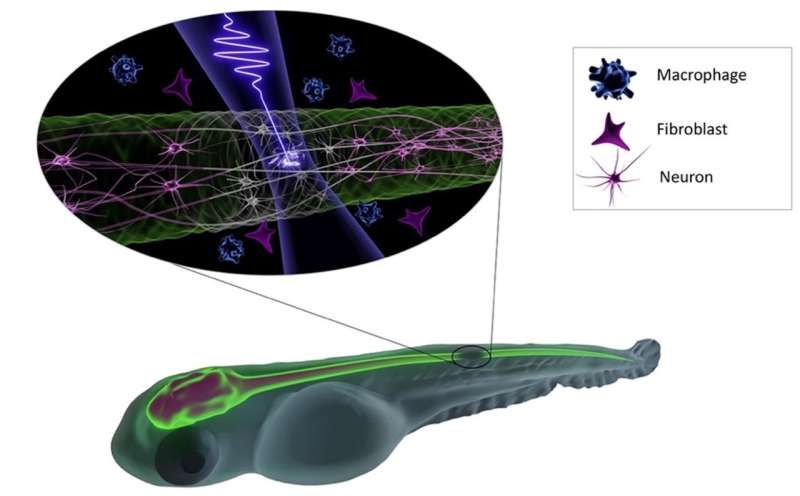This article has been reviewed according to Science X's editorial process and policies. Editors have highlighted the following attributes while ensuring the content's credibility:
fact-checked
peer-reviewed publication
trusted source
proofread
New insights into the interaction of femtosecond lasers with living tissue

Nonlinear light microscopy has revolutionized our ability to observe and understand complex biological processes. However, light can also damage living matter. Yet, the mechanism behind the irreversible perturbation of cellular processes by intense light remains poorly understood.
To address this lacuna, the research groups of Hanieh Fattahi and Daniel Wehner at the Max Planck Institute for the Science of Light (MPL) and Max-Planck-Zentrum für Physik und Medizin have joined forces to identify the conditions under which intense pulsed lasers can be used in vivo without damaging the organism.
The Erlangen-based international team used the vertebrate species zebrafish to delve into the mechanisms of photodamage in deep tissue at a cellular level triggered by femtosecond excitation pulses. The results have been published in Communications Physics.
Soyeon Jun, the first author of the publication and doctoral student in the "Femtosecond Fieldoscopy" group at MPL headed by Fattahi explains, "We demonstrated that damage to the central nervous system (CNS) of zebrafish, when irradiated by femtosecond pulses at 1,030 nm, occurs abruptly at the extreme peak intensities required for low-density plasma formation."
This allows for a noninvasive increase in imaging dwell time and photon flux during irradiation at 1,030 nm, as long as the peak intensity is below the low-plasma density threshold. This is crucial for nonlinear label-free microscopy.
"These findings significantly contribute to advancements in deep tissue imaging techniques and innovative microscopy techniques, like femtosecond fieldoscopy, which is currently being developed in my group. This technique allows for the capture of high spatial resolution, label-free images with attosecond temporal resolution," says Fattahi.
"Our results not only highlight the value of collaborations of the fields of physics and biology but also pave the way for in vivo applications to achieve light-based precise manipulations of the central nervous system," adds Wehner, head of the research group Neuroregeneration.
Correction note (5/28/2024): The wavelength of femtosecond pulses was corrected to 1,030 nm.
More information: Soyeon Jun et al, Nonlinear dynamics of femtosecond laser interaction with the central nervous system in zebrafish, Communications Physics (2024). DOI: 10.1038/s42005-024-01653-2
Journal information: Communications Physics
Provided by Max Planck Society





















